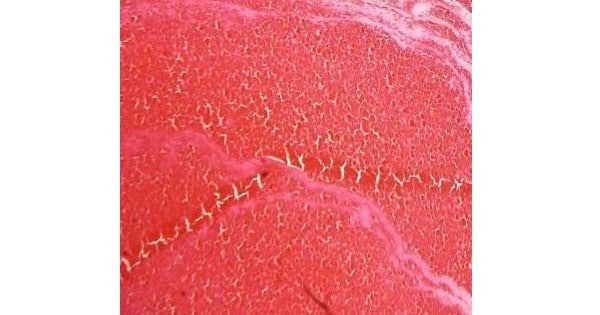Intrauterine Contraceptive Devices
CLASSIFICATION:
Copper-carrying devices:
- Copper T 200, Copper 7, Multiload Copper 250, Copper T 380, Copper T 220(pregnancy rate of lippes loop and Cu-T 200 are similar) and Nova T.
- Effective life of about 3–5 years.
- Cu 7380A have memory of 5 minute & life span is 10 year
Progestasert
- Progestasert is a T-shaped device carrying 38 mg of progesterone in silicon oil reservoir in the vertical stem.
- It releases 65 mcg of the hormone per day.
- The hormone released in the uterus forms a thick plug of mucus at the cervical os which prevents penetration by the sperms and thus exerts an added contraceptive effect
- Menstrual problems like menorrhagia and dysmenorrhoea noticed with Copper T are less with this device (40% reduction).
- Expensive
- Requires yearly replacement
Levonova Mirena:(5 years)(32 3 32 mm) contains 52 mg LNG, eluting 20 mcg daily
- Contains 60 mg of levonorgestrel (LNG) and releases the hormone in very low doses (20 mcg/day).
- Longer acting (5 years)
- Ectopic pregnancy is sixfold to ninefold higher in women who do become pregnant with progestogen IUCD as compared to failures amongst Copper T users.
- Cumulative 5-year pregnancy rate for LNG-IUD (levonorgestrel intra-uterine device) is 0.5 %.
- Frameless IUCD: Contains several copper cylinders tied together on a string, and it is anchored 1 cm deep into fundus
INDICATION:
- Monogamous relationship
- Multiparous woman
- Desirous of long-term reversible method of contraception, but not yet desirous of permanent sterilization
- Unhappy or unreliable users of oral contraception or barrier contraception
- Low risk of STD
USES:
- Contraception
- Postcoital contraception
- Hormonal IUCD (Mirena) in menorrhagia and dysmenorrhoea, and hormonal replacement therapy in menopausal women
- Following excision of uterine septum, Asherman syndrome
- IUD can be used for Emergency Contraception within 5 days
CONTRAINDICATIONS:
- Suspected pregnancy
- Pelvic inflammatory disease (PID)
- Undiagnosed vaginal bleeding
- Fibroids
- Menorrhagia and dysmenorrhoea after use of Cu T
- Severe anaemia
- Diabetic women
- Heart disease—risk of infection
- Previous ectopic pregnancy
- Scarred uterus
- Preferably avoid its use in unmarried and nulliparous patients because of the risk of PID and subsequent tubal infertility
- LNG IUCD in breast cancer
- Abnormally shaped uterus, septate uterus
TECHNIQUE OF INSERTION:
In calendar method of contraception, first day of fertile period is 10th day of shortest menstural cycle
Push-in technique
- Grasp cervix is with a vulsellum or Allis forceps
- Device mounted on introducer
- Stop of introducer is adjusted to uterine cavity length
- Introducer is then passed through the cervical canal and the plunger is pressed home
Withdrawal technique
- Rod containing IUCD is inserted up to the fundus
- Outer rod withdwawn followed by inner rod
- The nylon thread is cut to the required length
- The forceps and the speculum are removed and the patient is then instructed to examine herself and feel for the thread every week.
MECHANISM OF ACTION:
- Foreign body in the uterine cavity renders the migration of spermatozoa difficult
- Foreign body within the uterus → prostaglandin release & increases the tubal peristalsis → uterine contractility → fertilized egg is propelled down the fallopian tube→ reaches the uterine cavity before the development of chorionic villi→ unable to implant.
- The device in situ →leucocytic infiltration in the endometrium. The macrophages engulf the fertilized egg if it enters the endometrial tissue.
- Copper T elutes copper → enzymatic and metabolic changes in the endometrial tissue which are inimical to the implantation of the fertilized ovum.
- Progestogen-carrying device→ alteration in the cervical mucus →prevents penetration of sperms & endometrial atrophy.
- It prevents ovulation in about 40%.
COMPLICATIONS:
Immediate
- Difficulty in insertion
- Vasovagal attack
- Uterine cramps(most common during removal)
Early
- Bleeding(Most common side effect )
- Expulsion (2–5%)(Lippes loop)
- Perforation (1–2%)
- Spotting, menorrhagia (2–10%)
- Dysmenorrhoea (2–10%)
- Vaginal infection
- Actinomycosis
Late
- PID—2–5%. IUCD does not prevent transmission of HIV
- Pregnancy—1–3 per 100 woman years (failure rate)
- Ectopic pregnancy
- Perforation
- Menorrhagia
- Dysmenorrhoea
- Hypofibrinogenimia (Most common)
Exam Question
- Mechanisms for reduce risk of upper genital tract infection in users of progestin – releasing IUDs, include Reduced retrograde menstruation, Thickened cervical mucus & Decidual changes in the endometrium
- Progestasert (Levonorgestrel) is used for patients with menorrhagia
- IUD Cu 7380A life span is 10 year
- Cumulative 5-year pregnancy rate for LNG-IUD (levonorgestrel intra-uterine device) is 0.5 %.
- Memory of an IUD device is important while insertion into the intrauterine cavity. Memory of CuT380A is 5 minute
- Progesterone of choice in emergency contraception is Levonorgestrel
- Hypofibrinogenemia is most likely complication of IUD
- In calendar method of contraception, first day of fertile period is 10th day of shortest menstural cycle
- The pregnancy rate of lippes loop and Cu-T 200 are similar
- IUD can be used for Emergency Contraception within 5 days
- Levonorgestrel releasing IUD has an effective life of 5 years
- Levonorgestrel increases the risk of ectopic pregnancy
- Levonorgestrel releases 20 µg/day of levonorgestrel
- Absolute contra indication for IUD are Pregnancy, Undiagnosed vaginal bleeding & Pelvic infalmmatory disease
- The most common side effect of IUD insertion, which requires its removal is Pain
- Expulsion is most commonly associated side effect with Lippes loop
Don’t Forget to Solve all the previous Year Question asked on Intrauterine Contraceptive Devices

